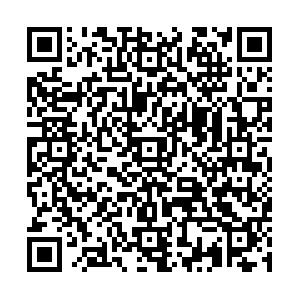Investigate on status quo of doctor-patient communication skills in standardized training of general practice
-
摘要:
目的 调查参加全科医师规范化培训学员的医患沟通水平,为医患沟通培训体系构建提供参考依据。 方法 采用标准化病人(standardized patient,SP)模式进行接诊,于2019年12月27日对成都市第五人民医院全科医学科103名规培医师使用医患沟通技能评价量表(SEGUE)进行现场观察打分,评估其医患沟通能力。 结果 SEGUE量表总得分为4~22(13.5±4.8)分,准备阶段(2.7±1.2)分;信息收集阶段(5.5±2.1)分;信息给予阶段(2.5±1.1)分;理解患者阶段(2.3±1.1)分;结束问诊阶段(0.7±0.2)分;其中高年级规培医师SEGUE量表评分高于低年级(P<0.05)。全科规培医师在以下沟通项目得分率低:保护患者隐私(29.1%)、让患者讲述对其疾病发展和(或)健康问题过程的看法(26.2%)、了解疾病对其生活的影响(35.0%)、核实所获得的信息(34.0%)、鼓励患者提问、核实患者是否理解(22.3%);认同患者为疾病所付出的努力、改变及其遇到的困难(17.5%);询问患者是否还有其他的问题需要探讨(22.3%)。 结论 全科规培医师的临床沟通技能水平有待进一步提高,亟须构建一套有效的全科规培医师医患沟通培训课程。 Abstract:Objective To investigate the doctor-patient communication level of resident physicians in standardized training of general practice, and to provide reference for the construction of doctor-patient communication training system. Methods On December 27, 2019, the standardized patient (SP) mode was adopted for admissions. Total 103 resident physicians in standardized training in the Department of General Medicine of Chengdu Fifth People's Hospital were observed and scored using the doctor-patient communication evaluation scale (SEGUE) to evaluate their doctor-patient communication ability. Results The total score of SEGUE scale was 4-22 points, with an average of (13.5±4.8) points. The preparation stage score was (2.7±1.2) points, the information collection stage score was (5.5±2.1) points, the information giving stage score was (2.5±1.1) points, the comprehend patient stage score was (2.3±1.1) points, and the end questioning stage score was (0.5±0.7) points. The score of SEGUE scale of senior standardized training physicians was higher than that of lower grade (P < 0.05). The scores of general practitioners in the following communication items were low: protecting patient privacy (29.1%), letting patients tell their views on the process of disease development and/or health problems (26.2%), understanding the impact of diseases on their lives (35.0%), verifying the information obtained (34.0%), encouraging patients to ask questions and verifying whether patients understand (22.3%), recognizing the patient's efforts, changes and difficulties (17.5%), asking patients if there are any other problems to be discussed (22.3%). Conclusion The clinical communication skills of resident physicians in standardized training of general practice need to be further improved, and an effective training course of doctor-patient communication is urgently necessary. -
表 1 103名参加全科住院医师规范化培训的医师基本资料
项目 类别 人(%) 性别 男性 38(36.9) 女性 65(63.1) 年级 一年级 36(35.0) 二年级 37(35.9) 三年级 30(29.1) 既往沟通培训 是 88(85.4) 否 15(14.6) 既往医患沟通培训类型 专题讲座 53(60.2) 模拟教学 35(39.8) 临床实践教学 31(35.2) 视频观看及分析 17(19.3) 巴林特小组 4(4.5) 其他 5(5.7) 医患沟通重要性 重要 97(94.1) 不重要 6(5.9) 自我医患沟通评价 优秀 27(26.2) 合格 52(50.5) 差 24(23.3) 表 2 不同年级间全科规培医师医患沟通能力比较
组别 例数 准备阶段
(x±s,分)信息收集阶段
(x±s,分)信息给予阶段
(x±s,分)理解患者阶段
(x±s,分)结束问诊阶段
(x±s,分)SEGUE量表总分
(x±s,分)得分率
(%)低年级 73 2.3±1.2 5.1±2.1 2.1±1.1 2.1±1.1 0.5±0.2 12.0±4.3 48.0 高年级 30 3.8 ±1.0 6.4 ±2.1 3.2±0.8 3.6±0.6 1.0±0.3 17.4±3.7 69.6 合计 103 2.7±1.2 5.5±2.1 2.5±1.1 2.3±1.1 0.7±0.2 13.5±4.8 54.0 t值 -7.068 -2.831 -5.649 -5.591 -4.201 -6.062 P值 < 0.001 0.007 < 0.001 < 0.001 < 0.001 < 0.001 表 3 不同年级间全科规培医师在SEGUE量表各条目的表现情况[人(%)]
维度 项目 低年级
(73人)高年级
(30人)合计 χ2值 P值 准备 1.有礼貌地称呼患者 51(69.9) 29(69.7) 80(77.7) 9.444 0.003 2.说明此次问诊的理由 67(91.8) 30(100.0) 97(94.2) 2.634 0.108 3.介绍问诊和查体的过程 22(30.1) 16(53.3) 38(36.9) 5.060 0.027 4.建立个人信任关系 18(24.7) 22(73.3) 40(38.8) 26.189 < 0.001 5.保护患者的隐私/尊重患者选择权 12(16.4) 18(60.0) 30(29.1) 23.655 < 0.001 信息收集 6.让患者讲述对其疾病发展和(或)健康问题过程的看法 19(26.0) 8(26.7) 27(26.2) 0.004 0.947 7.询问影响疾病的物理/生理因素 57(78.1) 22(73.3) 79(76.7) 0.264 0.609 8.探索疾病的社会、心理、情感因素 34(46.6) 14(46.7) 48(46.6) < 0.001 0.993 9.询问既往诊疗经过 56(76.7) 28(93.3) 84(81.6) 3.980 0.049 10.了解疾病对其生活的影响 19(26.0) 17(56.7) 36(35.0) 9.411 0.003 11.与患者讨论健康的生活方式/疾病预防措施 37(50.7) 22(73.3) 59(57.3) 4.568 0.035 12.避免诱导性提问/命令式提问 27(37.0) 18(60.0) 45(43.7) 4.697 0.033 13.给患者说话的时间和机会/无尴尬停顿 47(64.4) 24(80.0) 71(68.9) 2.431 0.122 14.用心倾听 52(71.2) 27(90.0) 79(76.7) 4.283 0.041 15.核实/澄清所获得的信息 24(32.9) 11(36.7) 35(34.0) 0.134 0.715 信息给予 16.解释诊断性操作的理论依据 54(74.0) 29(96.7) 83(80.6) 7.363 0.008 17.告知患者目前的身体情况 54(74.0) 30(100.0) 84(81.6) 10.351 0.002 18.鼓励患者提问、核实患者是否理解 10(13.7) 13(43.3) 23(22.3) 11.790 0.001 19.根据患者的理解能力进行适当语言调整 38(52.1) 24(80.0) 62(60.2) 7.285 0.008 理解患者 20.认同患者为疾病所付出的努力、改变及其遇到的困难 11(15.1) 7(23.3) 18(17.5) 0.997 0.320 21.体察并回应患者的暗示 31(42.5) 24(80.0) 55(53.4) 13.366 < 0.001 22.表达关心,使患者感到温暖/树立信心 41(56.2) 29(96.7) 70(68.0) 18.600 < 0.001 23.始终保持尊重的语气 67(91.8) 30(100.0) 97(94.2) 2.634 0.108 结束问诊 24.询问患者是否还有其他的问题需要探讨 9(12.3) 14(46.7) 23(22.3) 16.488 < 0.001 25.告知患者初步诊断及说明下一步的诊治方案 15(20.5) 16(53.3) 31(30.1) 11.908 0.001 合格人数 20(27.4) 23(76.7) 43(41.7) 26.213 < 0.001 -
[1] 张志峰, 袁岳鹏, 杜兴旺. 某院10年医疗投诉及纠纷分析[J]. 卫生职业教育, 2018, 36(22): 123-125. https://www.cnki.com.cn/Article/CJFDTOTAL-ZDYX201822068.htm [2] 杨荆, 李利华, 洪仕君. 医学生医患沟通能力培养路径探析[J]. 西部素质教育, 2019, 5(1): 68-69. https://www.cnki.com.cn/Article/CJFDTOTAL-XBSJ201901039.htm [3] 宋雪静, 牛润桂. 浅谈医患沟通在医患关系中的重要性[J]. 医学食疗与健康, 2020, 18(24): 190-191. https://www.cnki.com.cn/Article/CJFDTOTAL-YXSL202024120.htm [4] 王美荣, 张丹丹, 刘英杰, 等. 全科医疗中医患沟通评价工具研究现状[J]. 中华全科医师杂志, 2017, 16(12): 969-972. doi: 10.3760/cma.j.issn.1671-7368.2017.12.017 [5] 张晨昕, 刘宏斌, 康明明, 等. SEGUE量表对于医学本科生临床沟通能力的调查及评价[J]. 齐齐哈尔医学院学报, 2020, 41(3): 351-353. doi: 10.3969/j.issn.1002-1256.2020.03.035 [6] 王爱英, 夏吉凯. 医学生医患沟通能力现状调查及其培养策略[J]. 学校党建与思想教育, 2019, 36(11): 87-89. doi: 10.3969/j.issn.1007-5968.2019.11.025 [7] 段锦绣, 叶财德, 方静, 等. 香港家庭医学医患沟通技巧及对内地全科医学发展的启示[J]. 中国社区医师, 2020, 36(20): 188-189. https://www.cnki.com.cn/Article/CJFDTOTAL-XCYS202020109.htm [8] 汤镇海, 邹川, 戴宏勋, 等. 成都市全科规范化培训住院医师医患沟通培训现状研究[J]. 中华全科医学, 2020, 18(12): 2103-2105, 2116. https://www.cnki.com.cn/Article/CJFDTOTAL-SYQY202012034.htm [9] 孔燕. 基于微视频的角色扮演教学法在医患沟通教学中的应用[J]. 现代医药卫生, 2020, 36(22): 3671-3673. doi: 10.3969/j.issn.1009-5519.2020.22.046 [10] 吴君, 修子冉, 张金小, 等. PBL+CBL+TBL联合SP教学法在住院医师规范化培训医患沟通执业技能中的应用研究[J]. 中国中医药现代远程教育, 2020, 18(4): 12-14. doi: 10.3969/j.issn.1672-2779.2020.04.009 [11] SUN C, ZOU J K, ZHAO L B, et al. New doctor-patient communication learning software to help interns succeed in communication skills[J]. BMC Medical Education, 2020, 20(1): 8. doi: 10.1186/s12909-019-1917-z [12] 谷士贤, 张爱京, 霍刚, 等. 医患沟通技能评价表在住院医师规范化培训中的应用[J]. 中华医学教育杂志, 2018, 38(3): 435-438, 454. doi: 10.3760/cma.j.issn.1673-677X.2018.03.027 [13] 徐鹏飞, 郭洵溢, 杨凤姣, 等. 规范化培训住院医师共情能力现状及相关影响因素[J]. 四川精神卫生, 2019, 32(3): 253-257. https://www.cnki.com.cn/Article/CJFDTOTAL-WANT201903014.htm [14] 杨健, 宁玉文, 殷进功. 基于SEGUE量表的医学生医患沟通能力评价[J]. 医学教育研究与实践, 2018, 26(3): 419-421, 442. https://www.cnki.com.cn/Article/CJFDTOTAL-XBYX201803019.htm [15] 郑妍. 基于SEGUE量表的门诊医生医患沟通技能评价研究[J]. 吉林医学, 2020, 41(6): 1427-1429. doi: 10.3969/j.issn.1004-0412.2020.06.071 [16] 张晨昕, 刘宏斌, 康明明, 等. SEGUE量表对于医学本科生临床沟通能力的调查及评价[J]. 齐齐哈尔医学院学报, 2020, 41(3): 351-353. doi: 10.3969/j.issn.1002-1256.2020.03.035 [17] 赵铁夫, 邹晓昭, 周洪丹, 等. 北京市全科医生门诊医患沟通技能水平现状调查[J]. 中国全科医学, 2019, 22(4): 413-416. https://www.cnki.com.cn/Article/CJFDTOTAL-QKYX201904014.htm [18] 陈捷, 李会芳, 乐小婧, 等. 教师标准化病人联合案例教学法在医患沟通技能提升中的研究[J]. 昆明医科大学学报, 2020, 41(2): 158-162. https://www.cnki.com.cn/Article/CJFDTOTAL-KMYX202002032.htm [19] 李超然, 秦杰. 生物-心理-社会医学模式下医患沟通课程教学思考[J]. 卫生职业教育, 2020, 38(17): 48-49. https://www.cnki.com.cn/Article/CJFDTOTAL-ZDYX202017026.htm [20] 杜望春, 叶熊, 蔡巧玲. 构建基于全科医师社区工作场景的医患沟通课程体系的探索与实践[J]. 教育教学论坛, 2020, 11(25): 54-55. https://www.cnki.com.cn/Article/CJFDTOTAL-JYJU202025025.htm [21] 汪卓赟, 王静, 朱雷, 等. 住院医师医患沟通态度和能力现状调查及其影响因素研究[J]. 中华医学教育杂志, 2019, 39(2): 105-111. [22] 李佳钋, 侯悦, 黄岭, 等. 情景模拟联合角色扮演+互换在医学生产科医患沟通能力培养中的应用研究[J]. 现代医药卫生, 2020, 36(8): 1240-1242. https://www.cnki.com.cn/Article/CJFDTOTAL-XYWS202008044.htm [23] Royal College of General Practitioners. MRCGP Clinical Skills Assessment (CSA)[EB/OL]. (2020-05-19)[2020-09-01]. https://www.rcgp.org.uk/training-exams/mrcgp-exam-overview/mrcgp-clinical-skills-assessment-csa. -

 点击查看大图
点击查看大图
计量
- 文章访问数: 369
- HTML全文浏览量: 191
- PDF下载量: 13
- 被引次数: 0



 下载:
下载: 